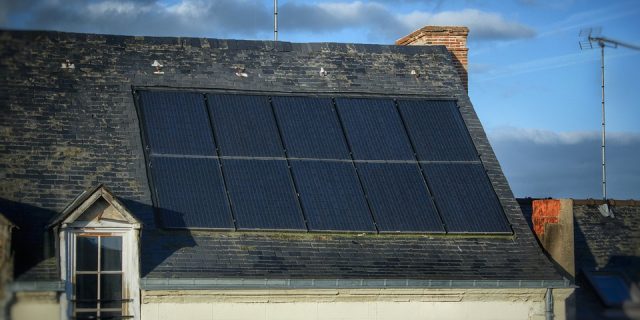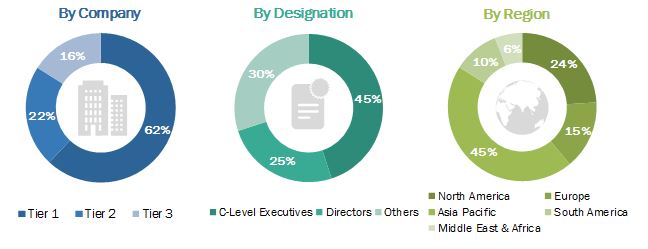
Residential Energy Storage Market Overview:
The global residential energy storage market is projected to reach USD 17.5 billion by 2024 from an estimated USD 6.3 billion in 2019, at a CAGR of 22.88% during the forecast period. This growth can be attributed to the declining cost of lithium-ion batteries and the need for energy self-sufficiency from consumers. The lithium-ion batteries are not only more efficient but also more environment friendly, which has also contributed to its rise in demand. Currently, most EVs, consumer electronics, mobile phones, laptops, smart watches, and electronic accessories use lithium-ion batteries.
Financial and regulatory support for renewables and emissions reduction is being given by governments globally. The movement toward renewables and environment-friendly regulations is being implemented now, which is driving the adoption of battery storage solutions. A major function that batteries play is offsetting the intermittency of renewables and reducing power supply curtailment. The growing strength and pervasiveness of clean energy among all end-users of electricity is also a major driver for the residential energy storage market.
Download PDF Brochure – https://www.marketsandmarkets.com/pdfdownloadNew.asp?id=153284325
The 3–6 kW segment is expected to hold the largest share of the residential energy storage market, by power rating, during the forecast period.
The demand for residential energy storage which has a 3–6 kW power rating is driven by the need for backup power during natural disasters. The grids in developed countries such as the US, the UK, Germany, Italy, and Canada are reliable and stable compared to the grids in developing countries. But these countries are prone to snow storms and blizzards. These natural disasters create a possibility for grid failure, which can lead to black outs. Sometimes, due to extreme weather, it is not possible to provide consumers with a solution before 2–3 days.
Consumers and governments install small storage solutions which can be utilized in times of need to avoid a major electricity crisis. Customers are also benefiting with residential energy storage solutions in place as consumers become energy independent during natural disasters. For instance, in 2018, Costa Rica suffered from hurricane during which the country experienced grid failures leading to black outs for 2–3 days. Then, the government enforced mandates on consumers to have residential energy storage solutions which would help them to have a power supply during grid failures.

The customer owned segment is expected to be the fastest growing residential energy storage market, by ownership type, during the forecast period.
The customer owned segment is expected to account for the highest CAGR during the forecast period. The growth of this segment can be attributed to the increasing need for energy self-sufficiency and rising demand for power backup. This is expected to increase the demand for the residential energy storage market during the forecast period. In addition to this, there is a rising demand for modular energy storage infrastructure in residential areas in developed countries such as the US, the UK, Germany, Norway, and China, which is driving the growth of the residential storage market.
Governments are also encouraging and enforcing mandates for efficient power consumption to reduce the load on the grids. Customers have lower energy bills and are becoming energy independent because of residential energy storage homes. The customers who usually have the solar rooftop installations also own a battery for self-sufficiency. Therefore, customer owned residential energy storage solutions are mostly existent at a global level.
Asia Pacific is the largest market in the customer owned segment and is expected to remain dominant in the global residential energy storage market by ownership type. The reason includes long-duration power cuts and unreliable power grids. To avoid power loss during such events, customers usually have storage solutions in their households.
Request FREE Sample Pages – https://www.marketsandmarkets.com/requestsampleNew.asp?id=153284325
Asia Pacific: The leading residential energy storage market.
In this report, the residential energy storage market has been analyzed with respect to 5 regions, namely, North America, South America, Europe, Asia Pacific, and the Middle East & Africa. Asia Pacific dominated the global residential energy storage market in 2018, owing to the installation of storage solutions for residential end-users. Over the past few years, this region has witnessed rapid economic development as well as the growth of renewables and demand for energy self-sufficiency, which has resulted in an increase in the demand for energy storage options. Countries such as Australia and some parts of India and China are also providing subsidies and financial incentives to residential consumers. This movement toward solar and storage is resulting in grid stabilization and greener countries with lower carbon emissions, thereby driving the residential energy storage market.
To enable an in-depth understanding of the competitive landscape, the report includes the profiles of some of the top players in the residential energy storage market. Some of the key players are Huawei (China), Samsung SDI Co. Ltd. (South Korea), Tesla (US), LG Chem (South Korea), and SMA Solar Technology (Germany). The leading players are adopting various strategies to increase their share in the residential energy storage market.


